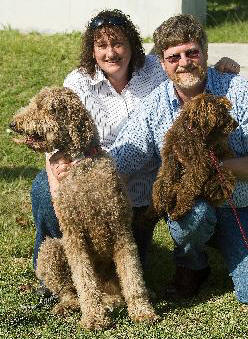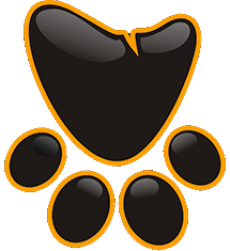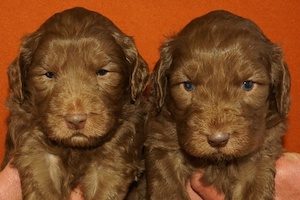Bermuda Romp 1
Labradoodle Romp at Botanical Gardens in Paget, Bermuda
This is what the Royal Gazette had to say in their local newspaper:
Some dog breeders will go a long way to make sure the puppies they sell are doing well – try 14,000 miles for Paul and Liz Bartlett of Tasmania, Australia. The couple was recently in Bermuda to be reunited with 20 Labradoodle dogs they had shipped to the Island.
Labradoodles are originally a cross between a Labrador retriever and a poodle.
Paul and Liz Bartlett, who run a company called ‘Tasmanian Labradoodles’, met up with all of their Bermuda dogs on a Sunday at the Botanical Gardens in Paget.
Labradoodles and other designer crossbreeds dogs are rising in popularity. Labradoodles are particularly in demand because of their fun loving personalities, and that they are non-shedding and allergy friendly.
They are not cheap. To buy and ship a labradoodle from Tasmanian Labradoodles can cost upwards of $3,000.
“It was wonderful to come here from Australia and meet all the puppies and their families,” said Mrs. Bartlett in an interview with The Royal Gazette.
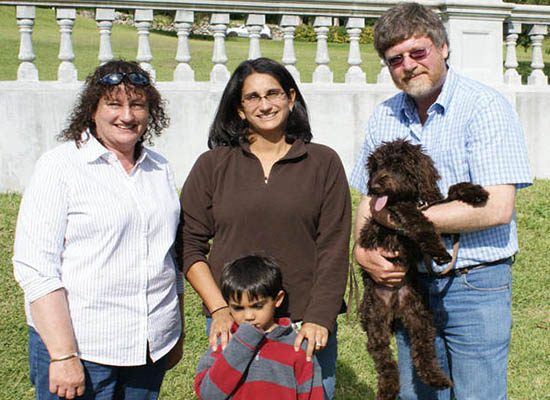
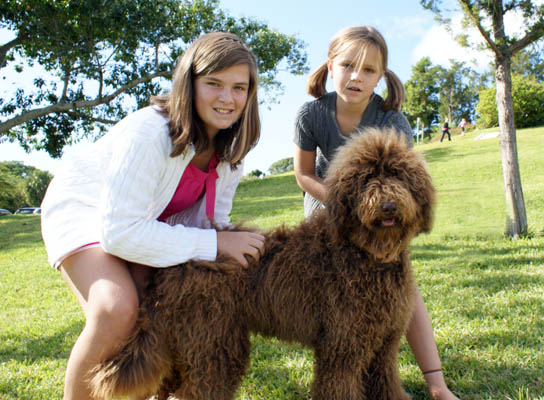
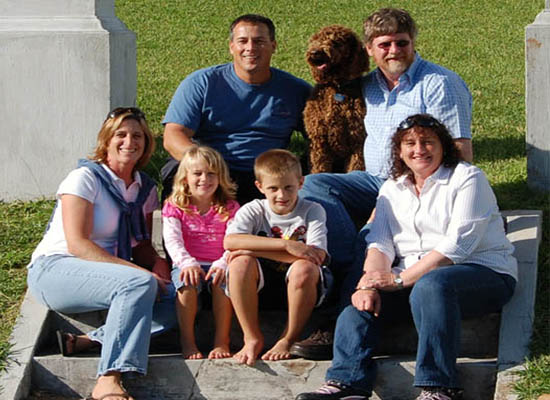
Mrs. Bartlett said that many of the dogs at the Botanical Gardens remembered them.
“One called Chappie only left a couple of months ago. He knew me no question,” said Mrs. Bartlett with a big smile. “And we sent a puppy to Bermuda the day before we left ourselves. We saw her with her new family.”
Mr. Bartlett said the greatest testament to their work was seeing the dogs happy; and hearing families say nice things about their dogs. The Bartletts previously ran camera film developing shops in Tasmania, until the rise of digital cameras killed the industry.
“We started breeding labradoodles about nine years ago,” said Mr. Bartlett. “We purchased our first one about 11 years ago.
“We chose a labradoodle because we liked that they didn’t shed any hair.
“They also don’t have stinky dog smell. They are very affectionate, and want to be part of the pack. The family is their pack.”
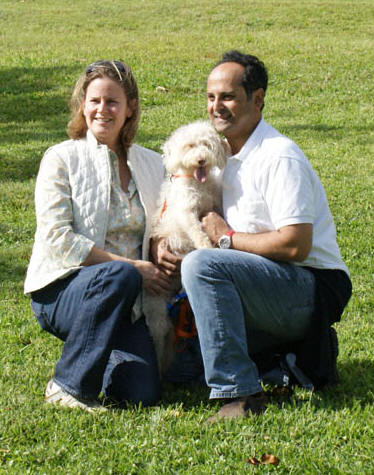
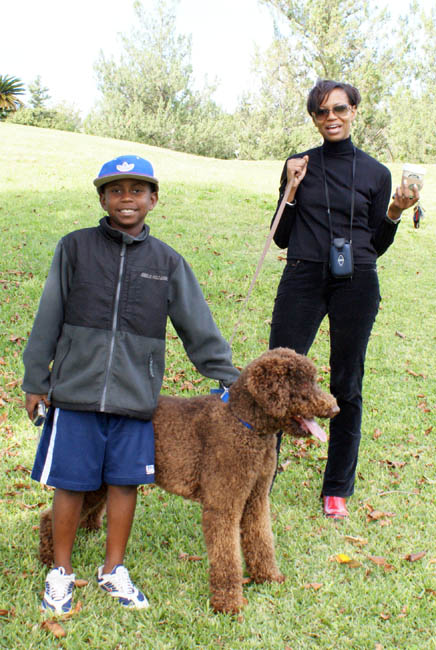

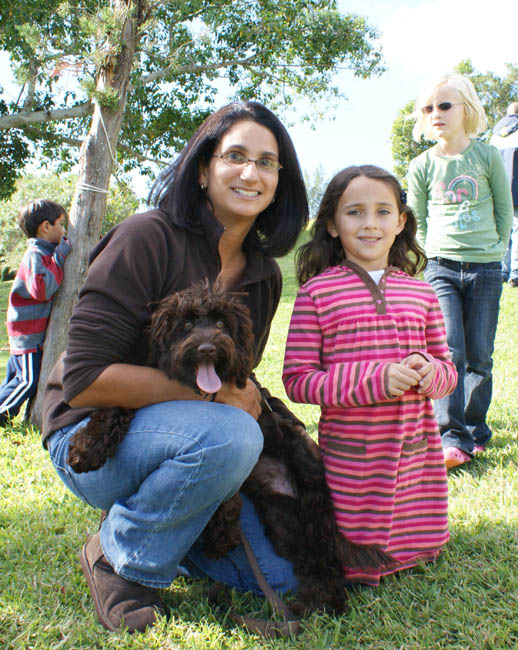
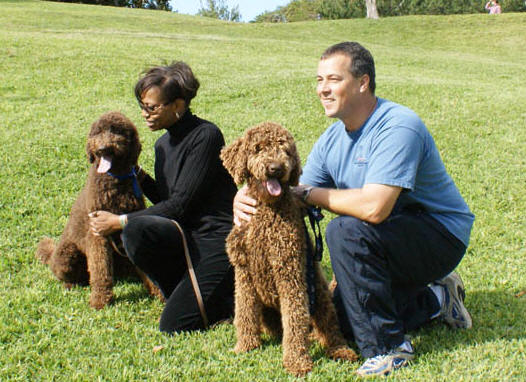
The Bartletts currently have 50 puppies and 60 adult dogs. They said they loved every one of their dogs.
“They are treated as part of the family,” said Mr. Bartlett. “Our whole philosophy towards raising dogs is to treat them with respect. We treat the mums and dads with respect and that’s why we produce such lovely puppies.”
Tasmanian Labradoodles is located in the northern midlands of Tasmania, 30 minutes from a town called Launceston.
The Bartlett property is 90 acres of rural land with some natural bush and over a 900 acres of native bush back drop. They have kangaroo, wallaby and fallow deer roaming the area.
The dogs are kept in a large facility with three to four dogs to a pen of 25 by 10 metres. They are rotated into the Bartlett household to socialise them.
“We do complete health testing on all our dogs before they are bred,” said Mr. Bartlett. “We also give a three year health guarantee with all of the puppies we sell.”
They take total responsibility for any life threatening defects.
Tests include evaluation of the breeding dogs hips and elbows checking for hip dysplasia, and DNA testing to make sure potential breeding pairs are not related.
“A couple of years ago we spent $5,000 testing our breeding stock for Progressive Retinal Apathy (PRA),” said Mr. Bartlett. “None of our dogs can produce PRA.”
But Mr. Bartlett said out of his 60 dogs, none of them had any uniform health problems.
“There is no one thing that stands out amongst them,”
Bermuda chef Chris Malpas said he chose to order his puppy from Tasmanian Labradoodles because he felt their puppies were more predictable.
“I went all the way to Tasmania because they had been bred there longer,” said Mr. Malpas. “I thought the breed was more consistent in terms of non shedding coat and temperament.
The Bartlett’s puppies are crate trained, lead trained, socialized and walked around their city before sending to Bermuda.
To get to Bermuda, the Tasmanian Labradoodle dogs travel a long way. At around 12 weeks they are sent by a professional animal freight company. They go from Launceston, Tasmania, to Sydney, Australia, then to Heathrow and Gatwick then to Bermuda.
They have a 20 hour flight to Heathrow Airport in England. Then they travel to Gatwick Airport and are sent on to their homes in Bermuda. The journey takes four to five days.
“The trip is not hard on the puppies,” Mr. Bartlett said. “We crate-train the puppies for about four weeks.
“We lead-train the puppies and socialise them. We take them for drives in the car. We have them in our house so they are domesticated. That breaks down all their fears. Socialising is the most important part. They get use to the noise of the cities, and lots of people. Families in Bermuda can put a lead and collar on the dog and walk them home if they like, or at least to the car.”
Mr. Bartlett said the only challenge to sending dogs to Bermuda was the small 10-day window for import permits.
“If the window was wider it would make it easier,” he said. “It is not a criticism just an observation. A lot of countries have a longer time window such as 30 days. With that small window everything has to be absolutely spot-on.”
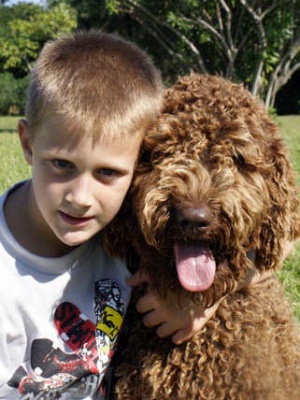
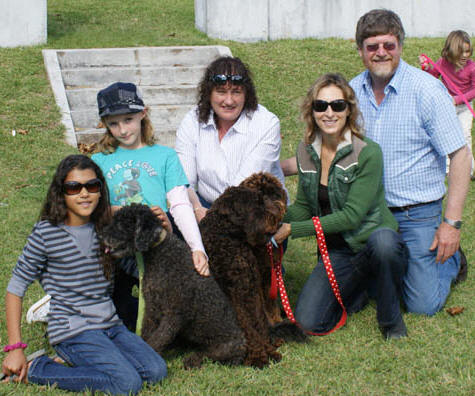
The first labradoodles were purposefully bred in 1988 by The Royal Guide Dogs in Victoria, Australia in an attempt to come up with hypoallergenic dogs for blind clients with allergies. Early results varied, but eventually, they did standardise the coat quality in the dogs the organisation bred.
Many in the purebreed community reacted with dismay and outright snobbery.
According to many websites there was often a waiting list for people wanting to puppy walk their guide dogs.
But when the first litters of labradoodles were produced, no one wanted to puppy walk them or foster them.
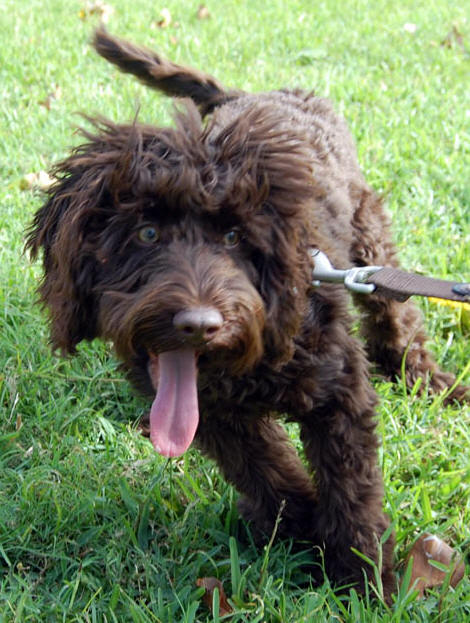
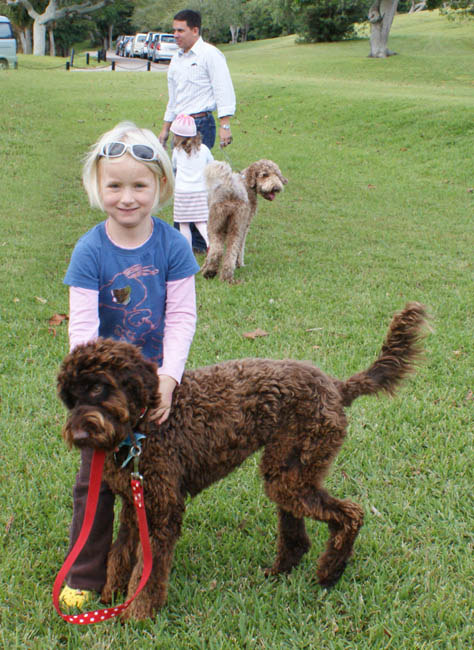
Eventually, the breeder went on television calling them “labradoodles”. The catchy name did it, and the phone started ringing off the hook with people wanting to walk them.
The subject of designer crosses today remains contentious in the dog community. Just the question of whether a labradoodle is a breed or a cross can set off a firestorm on online chat-groups.
The Bartletts and many other labradoodle breeders and owners would like to see the labradoodle accepted as a breed by organisations like the American Kennel Club. This would allow labradoodles to compete in high-profile dog shows.
“We will get breed status, but long-term,” Mr. Bartlett said. “It will take a long, long time. The requirements in the United States to become a registered breed are lower than Australia.
“It is highly likely it will become a registered breed in the United States before Australia.”
He thought there were in excess of 100 labradoodle breeders in the United States and probably only about 10 major breeders in Australia.
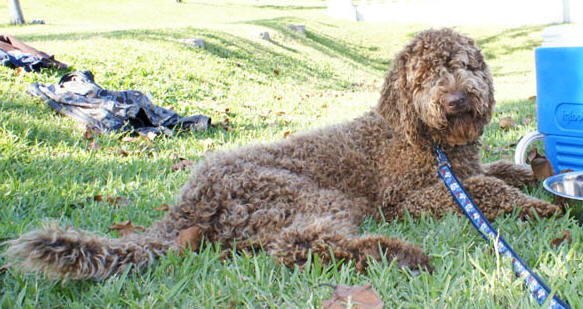
Paul & Liz would like to thank all our Labradoodle families in Bermuda for their attendance in the romp and making this trip possible and a special thank you to: Chris, Sue, Kip and Addy Malpas and family for their wonderful hospitality.
